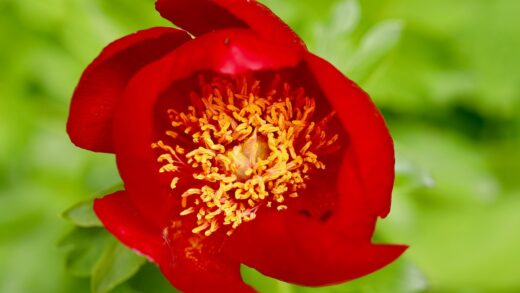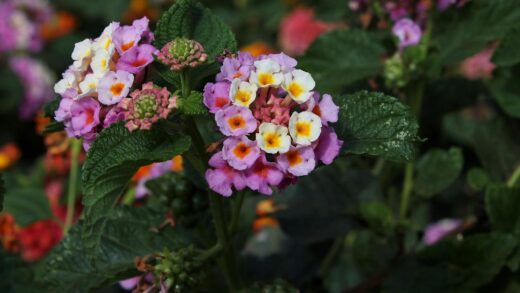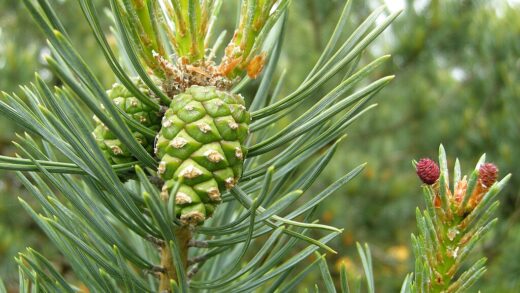While the plush plant is adapted to thrive in the nutrient-poor, rocky soils of its native Mexican habitat, providing a modest and well-timed supply of nutrients during its active growing season can significantly enhance its vitality, color, and flowering potential. Fertilization for succulents is a delicate balance; too little may result in lackluster growth, while too much can cause rapid, weak growth, or even burn the sensitive root system. Understanding the specific nutrient needs of this plant and the appropriate methods of application is key to supplementing its diet effectively without causing harm. Proper fertilization acts as a gentle encouragement, providing the building blocks necessary for the plant to achieve its most robust and beautiful form.
The plush plant, like all plants, requires a range of macronutrients and micronutrients for healthy development, but it needs them in much smaller quantities than most leafy houseplants. The three primary macronutrients are nitrogen (N), phosphorus (P), and potassium (K), each playing a distinct role in the plant’s health. Nitrogen supports foliage growth, phosphorus is crucial for root development and flowering, and potassium contributes to overall plant vigor and disease resistance. For succulents like the plush plant, it is generally best to use a fertilizer that has a balanced N-P-K ratio or one that is lower in nitrogen to prevent an excess of soft, weak foliar growth which can be more susceptible to pests and diseases.
A specially formulated cactus or succulent fertilizer is the ideal choice for feeding your plush plant, as these products are designed with the specific needs of these plants in mind, typically featuring a lower nitrogen content and a balanced profile of other essential nutrients. If a specialized succulent fertilizer is not available, a balanced, all-purpose liquid fertilizer can also be used, but it is absolutely crucial that it be diluted to a quarter or half of the strength recommended on the packaging. This dilution is necessary to prevent overwhelming the plant’s root system, which has evolved to absorb nutrients slowly from a sparse environment.
The timing of fertilizer application is just as important as the type and strength of the fertilizer used. The plush plant should only be fed during its active growing season, which typically spans the spring and summer months. Fertilizing during this period provides the plant with the resources it needs to support new leaf growth and to produce its characteristic vibrant flowers. Applying fertilizer during the autumn and winter, when the plant is dormant, is not only unnecessary but can also be harmful. The dormant plant is not actively taking up nutrients, and the unused fertilizer salts can accumulate in the soil, potentially damaging the roots.
When it is time to fertilize, the application should always be made to soil that is already slightly moist. Applying liquid fertilizer to bone-dry soil can cause the concentrated salts to shock and burn the plant’s delicate roots. A good practice is to water the plant thoroughly as you normally would, and then, either immediately after or at the next watering, apply the diluted fertilizer solution. This ensures that the fertilizer is evenly distributed throughout the soil and is absorbed more gently by the root system. Following these principles of using the right formula, at the right dilution, and at the right time will provide your plush plant with a beneficial nutrient boost that supports its natural beauty.
More articles on this topic
Choosing the right fertilizer
Selecting the most appropriate fertilizer for your plush plant is a critical decision that directly impacts its health and appearance. The most straightforward and safest option is to choose a liquid fertilizer specifically formulated for cacti and succulents. These specialized formulas are carefully balanced to provide the correct ratio of nutrients without an excess of nitrogen, which can promote weak, leggy growth in succulents. They also often contain a beneficial range of micronutrients, such as calcium, magnesium, and sulfur, which are essential for various metabolic functions within the plant.
If you are unable to find a succulent-specific fertilizer, you can opt for a balanced, all-purpose houseplant fertilizer, such as one with a 10-10-10 or 20-20-20 N-P-K ratio. However, it is imperative to dilute these more potent fertilizers significantly before applying them to your plush plant. A general rule of thumb is to use them at one-quarter of the strength recommended for regular houseplants. For example, if the instructions say to mix one teaspoon of fertilizer per gallon of water, you should use only a quarter of a teaspoon per gallon for your succulent. This prevents the risk of fertilizer burn and ensures a more gentle delivery of nutrients.
Organic fertilizers can also be a good option for those who prefer a more natural approach, although they tend to be slower-acting. Options like compost tea or a highly diluted fish emulsion can provide a gentle source of nutrients. However, it is important to ensure that these organic options are well-balanced and not excessively high in nitrogen. When using organic fertilizers, it is also crucial to maintain good soil aeration, as they can sometimes compact the soil more than synthetic fertilizers. Regardless of the choice, moderation remains the key principle.
Ultimately, it is wise to avoid fertilizers that are heavily skewed towards high nitrogen content, such as those marketed for lush, leafy foliage plants. This type of formulation encourages rapid, soft growth that is not characteristic of a healthy, robust plush plant. A sturdy, compact rosette with vibrant coloration is the goal, and this is best achieved with a fertilizer that supports strong root systems and overall plant resilience, rather than just rapid leaf production. Reading the label carefully and choosing a product with a balanced or low-nitrogen formula is the best strategy for success.
More articles on this topic
The fertilization schedule
Establishing a consistent and appropriate fertilization schedule is essential for providing your plush plant with the nutrients it needs without overdoing it. The feeding regimen should be strictly limited to the active growing season, which for the plush plant is during the spring and summer. As the plant emerges from its winter dormancy in the spring and begins to show signs of new growth from the center of its rosette, you can begin your fertilization schedule. This is when the plant’s metabolic rate is at its highest, and it can make the most efficient use of the available nutrients.
During the active growing period, a feeding frequency of once every four to six weeks is generally sufficient for a healthy, mature plush plant. More is not better when it comes to fertilizing succulents; they are adapted to a “less is more” approach. This intermittent feeding provides a gentle, steady supply of nutrients to support vigorous growth and encourage flowering without overwhelming the plant. It is helpful to mark your calendar or set a reminder to maintain a consistent schedule, but always be observant of the plant’s condition and adjust if necessary.
As the summer ends and autumn begins, you should cease all fertilization. The shorter days and cooler temperatures signal the plant to slow down and prepare for its winter dormancy. Continuing to feed the plant during this time can confuse its natural growth cycle and may encourage weak, late-season growth that is more susceptible to cold damage and disease. Allowing the plant to enter its dormant period without the stimulation of extra nutrients is a crucial part of its annual cycle of rest and renewal.
There should be no fertilization at all during the winter months. In its dormant state, the plush plant’s nutrient uptake is minimal to non-existent. Adding fertilizer to the soil during this time is not only wasteful but also potentially harmful. The unused fertilizer salts will accumulate in the potting medium, which can alter the soil’s pH and create a toxic environment that can severely damage or even kill the plant’s roots. Respecting this period of rest is vital for the long-term health and longevity of your plush plant.
Signs of nutrient imbalance
Learning to recognize the signs of both nutrient deficiency and excess is a valuable skill that allows you to fine-tune your fertilization practices for the optimal health of your plush plant. While nutrient deficiencies are relatively uncommon in succulents that are periodically repotted with fresh soil, they can occur. A general sign of deficiency is stunted growth, where the plant fails to produce new leaves or grows much more slowly than expected during the active season. The leaves may also appear pale or yellowish, a condition known as chlorosis, which can indicate a lack of nitrogen or magnesium.
A lack of specific nutrients can sometimes manifest in more distinct ways. For example, phosphorus is essential for root health and flowering, so a plant that consistently fails to bloom despite being mature and receiving adequate light may be suffering from a phosphorus deficiency. Similarly, potassium contributes to overall plant hardiness, so a plant that seems particularly susceptible to pests or diseases might benefit from a fertilizer with a slightly higher potassium content. However, it is important to rule out other potential causes, such as improper lighting or watering, before concluding that a nutrient deficiency is the primary issue.
On the other end of the spectrum, the signs of over-fertilization are often more dramatic and damaging. One of the most common symptoms is the appearance of a white or yellowish crust of fertilizer salts on the surface of the soil or around the pot’s drainage hole. This buildup indicates that the plant is receiving more nutrients than it can absorb. The leaves of an over-fertilized plant may also develop brown, burnt-looking tips or edges, a direct result of the roots being damaged by the excessive concentration of salts in the soil.
In severe cases of over-fertilization, the plant’s growth may become weak, stretched, and unnaturally dark green, a result of excess nitrogen. The entire plant may wilt or appear sickly, even when the soil is moist, because the damaged roots are unable to absorb water properly. If you suspect you have over-fertilized your plush plant, the best course of action is to flush the soil thoroughly. This involves watering the plant heavily and letting the water drain through completely several times to wash away the excess fertilizer salts from the potting medium. Following this, refrain from fertilizing for several months to allow the plant time to recover.
The role of fresh soil
While fertilizers provide a targeted boost of nutrients, it is important not to overlook the vital role that fresh potting soil plays in the overall nutrient management of your plush plant. Repotting the plant every two to three years into a fresh, well-draining succulent mix is one of the best ways to replenish its nutrient supply naturally. Fresh potting medium is rich in essential organic matter and minerals that may have been depleted from the old soil over time. This single act can often provide all the nutrients the plant needs for many months, reducing the reliance on supplemental fertilizers.
Over time, the soil in a pot can become compacted and depleted, and soluble salts from both tap water and fertilizers can accumulate to toxic levels. This buildup can interfere with the roots’ ability to absorb water and nutrients, leading to a decline in the plant’s health even if you are fertilizing correctly. Repotting provides a complete reset for the root environment, removing these harmful accumulations and providing a fresh, airy, and nutrient-rich medium for the roots to grow into. It is a fundamental aspect of long-term succulent care that directly impacts nutrient availability.
When you repot your plush plant, you are also given a valuable opportunity to inspect the health of its root system. This allows you to trim away any dead or rotting roots and to address any potential pest issues, such as root mealybugs, that might be hiding below the soil surface. A healthy root system is essential for efficient nutrient uptake, so ensuring the roots are in good condition is a prerequisite for any fertilization program to be effective. The combination of a healthy root system and fresh soil creates the ideal foundation for vigorous growth.
Therefore, you should view repotting and fertilizing as complementary practices in your plush plant’s care routine. Repotting provides a long-term, slow-release source of a broad spectrum of nutrients, while fertilizing offers a more immediate, targeted boost during periods of high demand, such as the active growing season. A plant that is root-bound in old, depleted soil will not be able to benefit fully from fertilizers. By implementing a regular repotting schedule, you ensure that the fundamental nutritional needs of your plant are met, making any subsequent fertilization more of a fine-tuning process rather than a critical intervention.


















